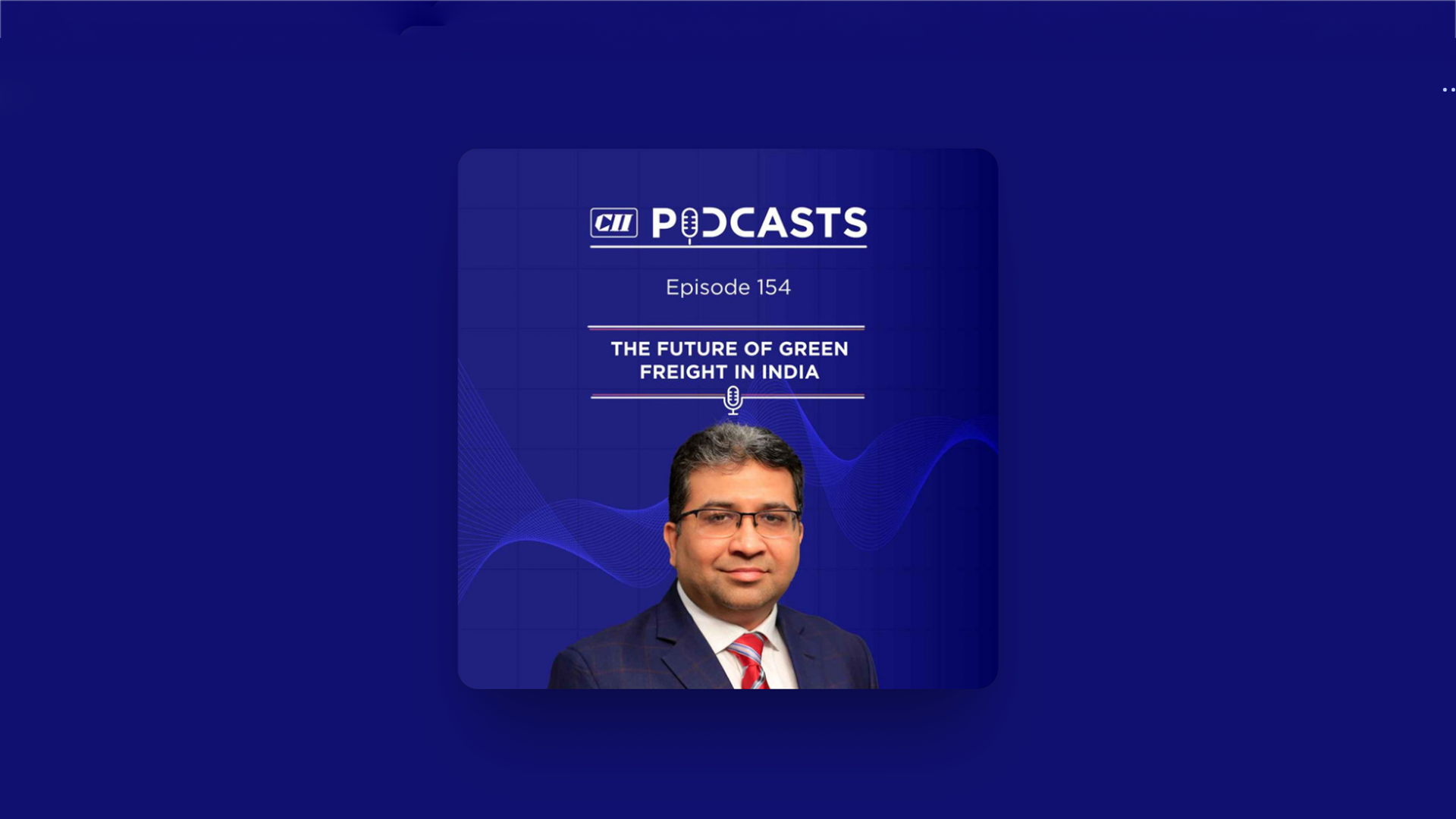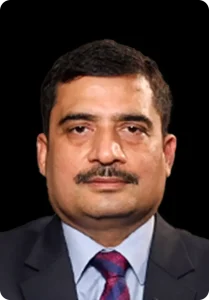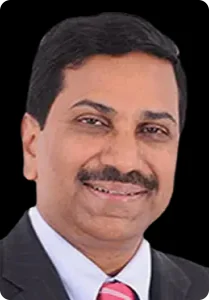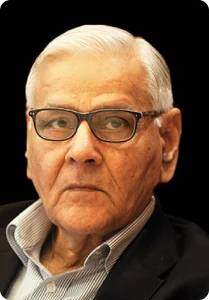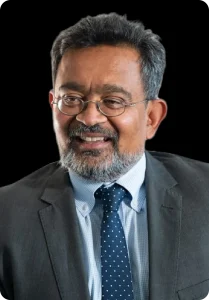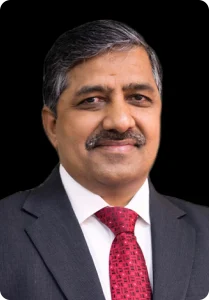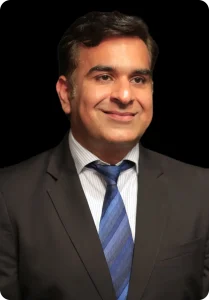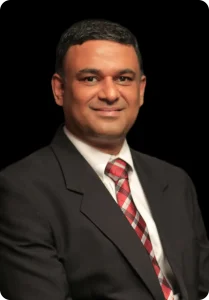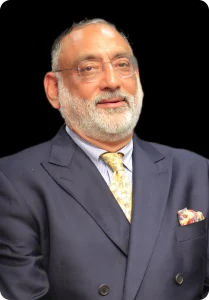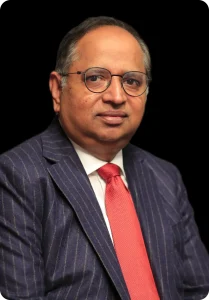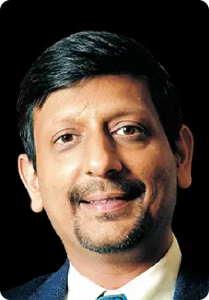Listen to Anand Mimani, CEO, GreenLine Mobility Solutions Limited, discuss the future of green freight in India, from decarbonising heavy trucking to building sustainable supply chains and shaping a resilient logistics ecosystem.
Podcast Transcript
Welcome to CII Podcasts. Hello and welcome to another interesting episode of the CII Podcasts. And our topic for today is the future of green freight in India.
India’s logistics sector is undergoing a sideways shift. With mounting pressure to decarbonize and a growing demand for sustainable supply chains, the country stands at a pivotal moment in its freight transformation journey. In this episode, we explore the most viable pathways to achieving green logistics at scale and we’ll dive into how India Inc. is integrating sustainability into daily operations and also unpack the real-world challenges and opportunities shaping the future of freight.
To decode what it takes to build a truly sustainable logistic ecosystem in India, we have with us today Anand Mimani, CEO, GreenLine Mobility Solutions Limited. Anand has over 26 years of cumulative experience, both as an entrepreneur and as a business leader in the corporate world.
His expertise lies in setting up new businesses and scaling them up, raising capital, forging profitable partnerships, and developing strategic alliances. In his current role, he is committed to decarbonizing heavy trucking in India and is setting the strategic direction for green logistics in the country. Thank you for making the time for us today, Mr. Mimani, and thank you for joining us on the CII Podcast.
[ Anand Mimani ]
Ajay, pleasure is all mine.
[ Ajay ]
Thank you. So, we’re really looking forward to a really interesting discussion today and to kind of recap my introduction and ask a question that kind of sets the stage for our discussion ahead. You know, India’s logistics sector, as I said, is at a critical inflection point and there’s this increasing pressure to decarbonize.
So, what are the most viable pathways, do you think, for achieving sustainable freight movement at scale?
[ Anand Mimani ]
Well, I suppose, as we have been advocating in Greenline in the last two, two and a half years, we believe that all short haul, heavy duty transportation should be put on EV and EV is the best way forward for all short miles and charged naturally with solar power. And all long hauls should be done with LNG at the moment. LNG reduces carbon dioxide by approximately 30%, depending on terrain to terrain plus minus 5%.
And yeah, I believe that nothing better than that can happen because with one fill of LNG, the vehicles have been performing a range of 1000 kilometers, which is one type of vehicle and the other range is about 2000 kilometers. And saving 30% carbon dioxide with limited pumps across India is a good way forward. And EV naturally goes 100% carbon dioxide, zero zero, when we use it with renewable power such as solar.
So it is a very good solution. It can be scalable also very easily. And we believe this is the future.
This is the way forward that if India implements it in a proper manner, decarbonizing of road logistics should not be a concern.
[ Ajay ]
Okay, thank you for that answer. I think so we covered two really important things that are both you know, immediate and long term goals that is short term short, short distance vehicle being on EV and longer distance one being on LNG. And, you know, just beyond long term goals.
I wanted to ask you how is India in integrating green logistics into daily operations? And do you think companies genuinely are sort of walking the talk when it comes to sustainable freight practices? I mean, we spoke about yours at first, but you know, if you would like to give an overview of the industry as a whole?
[ Anand Mimani ]
Well, if I have to say every industry, whether it is metal mining, whether it is construction industry, that is primarily the cement industry, whether you call it FMCG, express cargo delivery, chemicals, automotive, every sector you can talk about, you go and talk to any of them. Everybody has a sustainable agenda goal. Everybody wants to reduce carbon dioxide on scope three emission level basis.
Everybody is very concerned about it. And if there is a solution put on the table for them, it is very much welcoming by every customer of ours today. So in the last two, two and a half years, it is not just that Greenline has deployed vehicles, but there are more and more players now coming in deploying both LNG vehicles and EV vehicles.
It’s a very good environment now that although Blue Energy Motors was the first manufacturer of these vehicles and in the country, but today’s date, Tata Motors has also come up with LNG vehicle fleet, Volvo Ayesha has also come up, Ashok Leland has also come up. So the expansion is more and more. There are companies like Volvo, although expensive vehicles, but people are also buying them and deploying.
So the adaptability of LNG powered vehicles has been very good. And now EV vehicles are also making in roads very well. So we see that all 100 to 300 kilometer range of movement of goods, when I say short hauls, people have started deploying EV vehicles and all long hauls, logistics companies, maybe in a smaller manner, but they are coming.
So inroads are happening by the customers, they are pushing every logistics vendor to start procuring some green vehicles, whether it is LNG and EV and start deploying the same. So as we speak, I believe that ecosystem is getting created in the country. And it’s a good moment that the pull and push from both the ends are there from the customers and the logistics companies have also started looking into it.
[ Ajay ]
Yeah, thank you. And I think the really important point that you highlighted that the push is also coming from customers, as well as the fact that logistics companies are also sort of making the requisite changes. So, you know, back to GreenLine again, GreenLine has emerged as a key player in green freight.
So how is the company enabling this transition in real operational terms?
[ Anand Mimani ]
Well, GreenLine has already deployed the vehicles across every sector, right from north to south or east to west. All LNG vehicles are already moving. Lately, we started moving material for Tata Steel from their Odisha plant in Kalinganagar, all the way to Ahmedabad, that’s Gujarat or Mumbai or Pune in Maharashtra.
So east to west movements are happening. North to south, we’ve started moving for various customers that is all the way from Rajasthan to you can say Chennai as a belt or Karnataka as a belt, movements are happening of various goods. So vehicles are moving north to south, east to west, and across all sectors, not just one sector, whether it is metal mining, whether it is FMCG, whether it is express cargo.
So vehicles are moving for all the sectors in these directions. There are more and more pumps now. GreenLine’s subset, RealTriGas itself has put up already six pumps and is in the process of putting up another 10 pumps in the next six months or so.
More and more companies such as HPCL, IOCL, BPCL, MGL, MNGL, IGL, all of them are putting and commissioning pumps. So today, there are about 25 pumps already in the country, which is helping us continuously deploy these vehicles more and more in the country. And yes, now we’ve also started deploying EV fleet vehicles in GreenLine for all our customers.
So I think it’s a 4 million vehicle market today that India is having on MCV, HCV, and the vehicles are performing good. All the costs operationally, they are more benefit, not just CO2 reduction, but operationally also the costs are, I mean the capital costs may be a little higher, but operationally the costs are cheaper in both the LNG and EV, which makes it more viable as well. So GreenLine is moving well.
We are very happy with the support of our customers that we are being able to push more and more vehicles in the country in their systems.
[ Ajay ]
Okay, thank you. Thank you for that answer once again. And just to once again zoom out to a broader perspective, from your experience, what are some of the most important on-ground learnings that have shaped clean logistics implementation in India?
[ Anand Mimani ]
Well, planning is something which we believe is extremely important since these are newer vehicles, newer roads for the drivers, training of the drivers is extremely important. You know, skill improvement is very much concerning that the drivers behaviors of driving these newer vehicles are there because these are all new aged vehicles, one of the most modern vehicles the trucking industry has seen. And a proper training, a proper learning for the drivers is extremely important is what we believe.
Moreover, financing of the vehicles are also extremely important. So when you are planning to buy the vehicle, deploy, which route it should work on because you also need to bring in return loads. So loads has to be on both the sides going as well as returning to make it very much viable, just like any other diesel vehicle.
Plus driver training and in order to get better fuel mileage, better fuel efficiencies on gas-based trucks. All those skill training requirements are of critical essence, which we believe if every logistics company does it, there’s no way looking back.
[ Ajay ]
Yeah, thank you. And you know, just to perhaps add a follow-on question to that. So infrastructure remains a key barrier, right, especially for alternative fuels.
So what’s needed on that front really to accelerate readiness across the LNG and EV segments?
[ Anand Mimani ]
Well, LNG between the western to southern corridor, I suppose there are enough pumps. Whether you say the state of Rajasthan, Maharashtra, Gujarat, each of the pumps are now having at least four, five pumps each state is having. Moving down to Karnataka and Tamil Nadu also, each state is having at least three to four pumps.
So it is very well covered between the western and the southern zone. A little more pumps are expected to now come between the eastern and the northeast side. So which we believe between by December, there are many more pumps expected to get open between December and March.
And the whole quadrilateral should get covered. So LNG infrastructure built up would be very good. I don’t see that.
Hopefully within this financial year, it should be in a position that you can practically go cross-country anywhere. Today only we are doing north-southeast as I shared earlier. But yeah, for any company in the logistics industry, doing it very comfortably within this year, the whole market is very much open for all of them.
As far as EV is concerned, EV is still in the making. The root stitchings can be done only on a route trip basis on point A to point B, with a definitive approach from the, with the help of the customer. Doing it the long haul would be very challenging because even in short haul today, the power grid supply is extremely important.
And more importantly, that should be green. Because using just thermal power and just charging vehicles would not be the right solution for which you are entering this market. But in order to ensure that we’ve done justice to the market, having a green power or at least interchangeable, that you give it to the grid, the renewable power somewhere and you get it back from the grid across the highways and the state governments help and support in doing that is very, very important and key to it.
And definitely some pushes towards, since the vehicle is expensive and everything is a little more challenging in EV today, definitely some policies like the vehicle is heavy because of the battery. The battery is very heavy and heavy duty vehicles and from a 55 ton vehicle in comparison to a diesel vehicle, these vehicles are one to two tons more heavier. So if the government push is there that if they can look into on giving some kind of a dispensation over there, or like in the passenger car vehicles and everything, if those dispensation or tolls and everything are given, if on heavy duty vehicles is provided for one or two years or three years by the government, we believe it would be a stronger push that would help the penetration of more EV vehicle deployment on account of these three things. One, the power grid supply across the highways be made available.
Second, they are swappable with solar power. Third, with doing the negative payload, which is happening at the prime where that can be touched upon or done something by the government as well as on the toll because if you’re using renewable power for using these, for driving these vehicles, we believe the country’s important account of oil will also come down. So if something is given on account of toll or something, it would be a good pull market for the EVs also in short hauls.
So these are few things that we believe not just infrastructure or some green channeling is done during the whole compounding of infrastructure in both LNG and EV. It’s a good way forward. Slowly things are happening but they’re slow.
If it’s a little more pushed, surely we are almost there then.
[ Ajay ]
Okay, thank you for that. I think that was really well explained. Firstly, a positive outlook in terms of LNG infrastructure where you said that within this financial year, there should be enough sort of pumps across the quadrilateral for longer haul transport.
And I think you really explained the challenges in terms of EV, especially in terms of just not having it also connected to a kind of a renewable energy grid and some of the policy changes really that need to be pushed. And you know understandably that is still building momentum but I think you outlined some really great steps there to sort of give it a push. And so Mr. Namani, if you were going to look at it over the next five years, let’s take that time frame. How do you really see the green freight landscape evolving?
[ Anand Mimani ]
Well, if you have to see the green freight landscape, I believe it would be very good because everybody is getting into it. Everybody is trying to commit to some percentage of their fleet to be made green. Every OEMs, our customers are asking.
ESG is a mandate that is floating now in every corporate and they are pushing it to their vendors. So all logistics companies have also started thinking on account of ESG mandate from an environment point of view, from A-levels point of view. Now today we are using 100% of A-levels in our, the first level A- in our vehicles.
So at least the pupil of the eyes are monitored of every driver. It is told in our command center if he’s feeling sleepy, if he looks into his cell phone. Alerts are generated and advised to them.
There are six vehicles, six cameras in every vehicles all around it in 360 degree manner monitoring. So data availability is very much there for our customers from every point. We put up a carbon clocks and everything which would be the future.
So digital utilization if done in green vehicles which has started happening all across the country, it is evolving and we believe in the next five years it would be a different world altogether where more and more utilization of these newer generation vehicles will be done. Best of the technologies would be used in order for people to work on their transportation plannings, network plannings, usage of driver safety monitoring systems would also be there. So it’s a changing world and everybody has to ensure that it’s more tech enabled, right use of technology is done so that you can be a better player so that the return on investments are much better and as well as we all have to learn to step into the new world and take it to the different level.
So it’s a good area to be in for any logistics company venturing into green logistics because operationally it is viable, good for the future, every customer is demanding it and these newer greener vehicles are bringing in the new generation of tech piece which you can use and become a better transportation company.
[ Ajay ]
Yeah that sounds very positive indeed and you know what role can industry bodies like CII play in enabling faster adoption of clean logistics according to you?
[ Anand Mimani ]
Well as I shared earlier those three four points if they are pushed or touched upon with the government by bodies like CII on account of negative payload being corrected which gives a boost or in case if the government can look into making a toll-free environment for LNG and EV for at least two three years it can give a good strong pull in the market because the oil bill of the country is coming down. Getting the power grid and allowing a free supply you know normally it’s a wheeling charge or cost which is paid if you use a different exchange power or anything but in order to boost EV deployment, if something could be considered in the next few years having a green power by all the EV vehicles would be one of the best solutions that we can put on the table.
So these three four things if pushed and to top it all with the renewable power if the vehicles are charged and run and if a carbon credit market could be brought into the country that could be a value advantage because scope one, scope two, a lot of work is happening. We see scope three if this can be pushed also to the government that why not if you have everything clean we should look into how to bring in carbon credits in India, how to make it more sustainable, how to make it more viable. These small things can help the whole industry, the whole fraternity to even take a better look into greener transportation, buying expensive vehicles and definitely if something can be discussed with the government to make it ease of finance you know PSU banks they need to come forward and finance these vehicles if you take a higher call on financing these vehicles, NPFCs financing these vehicles, there are green funds available by RPI for these financial institutions. So financial institutions need to be also pushed in order to set up targets internally to finance these vehicles at a right rate of interest to the logistics companies to make it more viable for them.
So if a body such as CII pushes the government, the financial industry to look into more greener vehicle being financed and these small incentives if that can be packaged up which is not going to hurt the government but yes it could give a stronger push to the industry. So that those would really help in pushing the industry at a faster pace.
[ Ajay ]
Okay, thank you for that once again and as we’re rounding up a very interesting discussion for today, just from a CEO’s perspective what do you think is the biggest kind of mindset shift needed to to unlock the full potential of green logistics if you just look at it going forward?
[ Anand Mimani ]
Well, the scrappage policy if it can be pushed again that’s another big area as a CEO I would say that all these things which I have earlier also said that CII could push and the government incentives and initiatives not incentives but yeah initiatives can be pushed in a better manner clubbed with ESG. I suppose this industry can go in for a very big boom. There’s a huge shift which is as it is there in the mindset of all Indian corporates, all Indian logistics companies have been talking about it on a continuous basis that we need to work this out in a better manner.
So a good blend once it is made we believe there’s no stones unturned for any CEO of any logistics companies looking at the green fuel, adopting it and pushing it to a different level.
[ Ajay ]
Okay and on that note we’ll end our discussion for the day. Thank you so much Mr. Mamani for sharing your knowledge and your insights about this industry with us. We hope to hear from you again soon.
Thank you for making time for us today on the CII Podcast.
[ Anand Mimani ]
Pleasure’s all mine. Thank you for having me.
[ Ajay ]
Thank you for listening to CII Podcasts.

